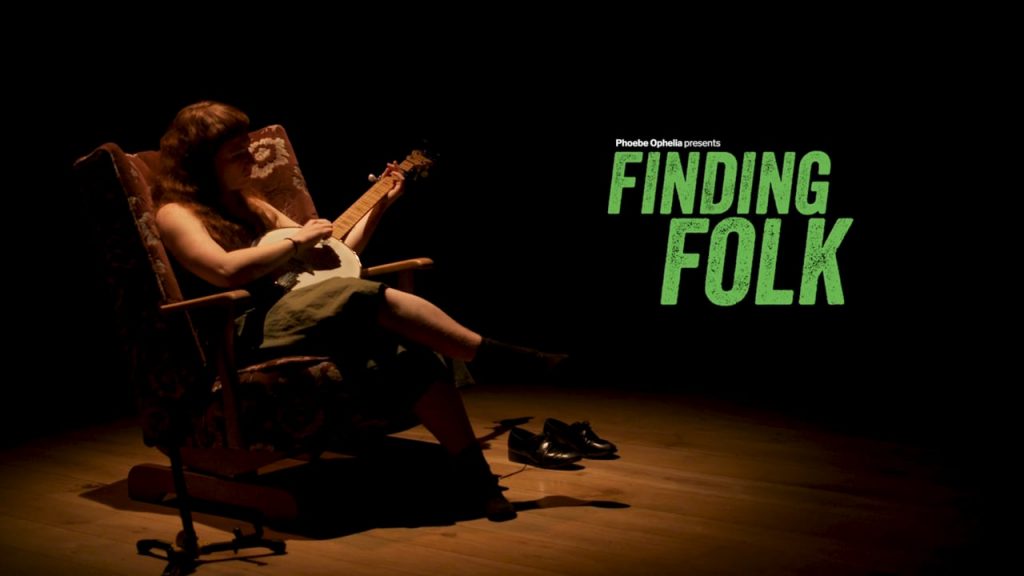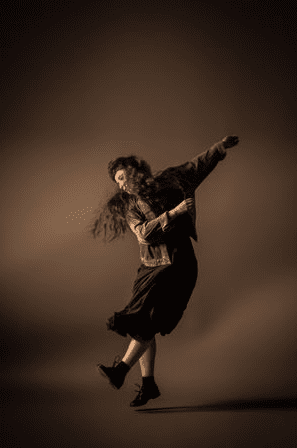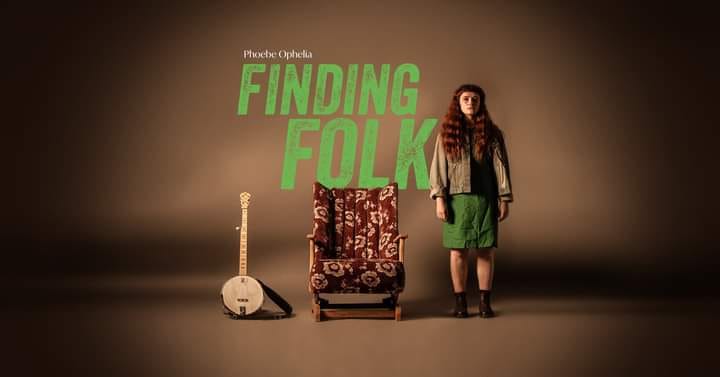So after a pretty big hiatus for live events, we found ourselves trundling off to the Sheffield University Drama Studio to see the latest play “Finding Folk” by Phoebe Ophelia (http://www.phoebeophelia.com/finding.html).
Centred on the life experiences of Ophelia (a young Lancashire woman who we find has suffered trauma within her family), the scene sets on an overall green aesthetic with a rocking chair, some cool matching jade shoes and a quiet, gentle banjo tune strumming within the confines of the old Baptist Church.
An audience member’s appreciation for “Finding Folk” will depend on what they intend for their evening. After all, “Finding Folk” can be thought of in three parts. It is: (i.) song and dance inspired by Appalachian music and performed consistently well throughout the set (ii) a drama, with aspects of the performer’s life physically re-enacted with all the pain and joys that comes with it and (iii.) a creative and arts-based therapy for the performer and (to some extent), the audience, which both seeks to explore the nature of the therapist-client relationship. There is some great singing and dancing here that shines like fresh fruit in the midday sun. This is due to Ophelia’s combined optimism and commitment during these song and dance moments. You get to hear the odd old-time ditty at certain intervals (such as “happy go lucky me”) coming over the waves in the more cheerful sections of the play, and this is all good, but the crux and main push of the play seems to sit more with the second and third points. There is a reason for this.

In keeping with the play being a piece of creative therapy, “Finding Folk” is quite vague with the details. There are quick snapshots, like thin slices of cheese, where things are clearer than others such as Phoebe’s representation of her mother’s ill health and being “on the waiting list”. This is an especially visceral scene, capturing the spinning wheel of ill thoughts that repeat and repeat in their destruction. It is an uncomfortable watch, but only because it is so raw and believable. There are other occasions which are seemingly happy but because of the “show-not-tell” nature, it is not fully clear whether it is a happy moment. At one point there is an interlude where Ophelia meets a man in a club and she spends the night with him. It seems like the warm beam of a lighthouse lighting up a foggy mind but it ends with a fall (literal and mental). Is it a negative event in itself, or does her mental health and doubts catch up with her? Perhaps this lack of clarity is the art itself as therapy investigates multiple truths and when mental issues are thrown in it can lead to the blurring of perception when they interact with memory, even before introducing them in the art space.
This lack of precise details seems like a necessary characteristic of the first half of the play. The music and dance is a vehicle for the performer’s memories rather than what many might feel the key subject of discussion is. “Finding Folk” does not describe the healing power of the banjo as such, so you may be waiting for the epiphany moment when the banjo bursts into Phoebe’s life and brings respite to her feelings but along with some excellent dance steps, it is just kind of “there”, quietly dropped in from the beginning and allowed to take root through the course of things.

When the performance ends and there is a 45 minute discussion about the work which is preceded by a relaxation technique to open up the feelings of the audience. We wondered how this would play out as in our work life we encounter these aspects of mental health regularly and see the importance of discussing interventions and therapy. That being said, the notion of using the second half to ask specific questions to clear up and build on what has been shown in the first half was not a part of the performance which we were fully invested in. We applaud the innovation here, and enjoyed the discussion but would have preferred a longer, perhaps more traditional performance with further narration that strongly delved into the central character “Finding Folk”, as in the title. Like we said, the love of folk is implied in the performance as the artist does not reference it much. This is especially the case when the first question of the discussion is an audience member asked “how” the central character “found folk”. Some will be fully involved and intrigued, whereas other audiences might find this interactive part too intrusive and left-field for their tastes.
That being said, it is a moving and valuable piece of work which excels in its physicality in performance and music. Heart-felt and brave, it sets out as an exercise in catharsis and exploration of trauma, memory and art and manages this (in large part due to Ophelia’s excellent physicality). Those with a large interest in folk music might want to check they are ready for an evening of more introspection and experimentation than they are expecting before venturing into the night to purchase a ticket.

